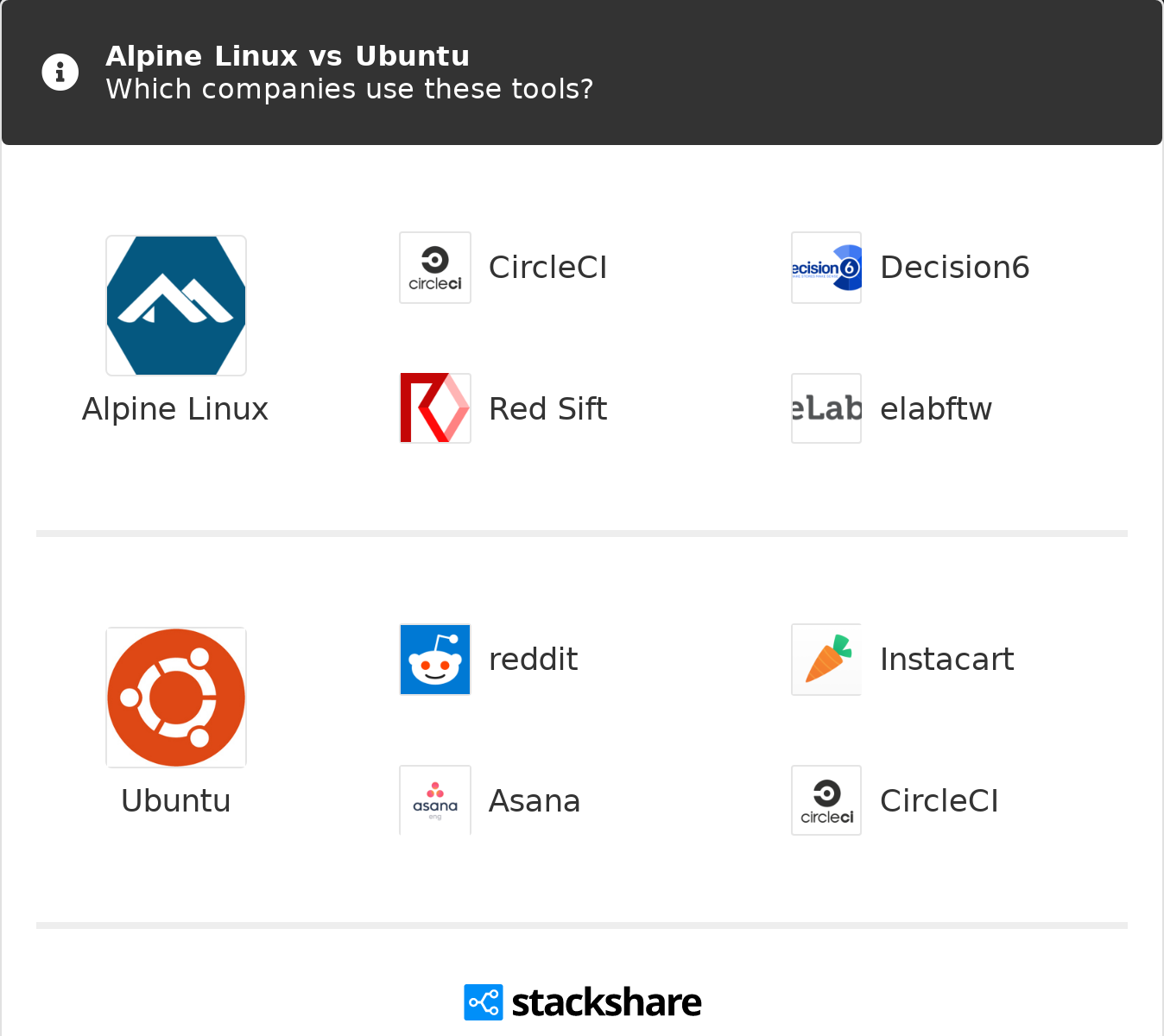还在用Alpine作为你Docker的Python开发基础镜像?其实Ubuntu更好一点

一般情况下,当你想为你的Python开发环境选择一个基础镜像时,大多数人都会选择Alpine,为什么?因为它太小了,仅仅只有 5 MB 左右(对比 Ubuntu 系列镜像接近 100 MB),但事实的真相是,我们选择基础镜像并不是为了体验一下Python语法而已,在此基础上,我们需要调试和安装各种扩展,可能会安装很多三方依赖,甚至预设更多服务,在这种环境下,Alpine就并非是一个很好的选择了,本次我们就来分别在Alpine和Ubuntu上来体验一下安装和编译Python的区别。
首先分别拉取Alpine和Ubuntu的镜像:
docker pull ubuntu:18.04
docker pull alpine拉取完毕后,可以看到,体积上确实差距明显:
REPOSITORY TAG IMAGE ID CREATED SIZE
ubuntu 18.04 6526a1858e5d 2 weeks ago 64.2MB
alpine latest a24bb4013296 3 months ago 5.57MBubuntu占用64mb,而alpine仅仅5.57mb。
但是先别着急,假设我们的python应用需要做一些科学计算,并且将数据以图形的方式展示出来,这时候就需要matplotlib和pandas这两个库的帮助了,先用ubuntu来安装这俩个库,编写Dockerfile.ubuntu
FROM python:3.7-slim
RUN pip install --no-cache-dir matplotlib pandas然后运行镜像脚本:
docker build -f Dockerfile.ubuntu -t 'ubuntu-mat' .可以看到,编译好的镜像从原先的60mb暴涨到了263mb。
liuyue:blog liuyue$ docker images
REPOSITORY TAG IMAGE ID CREATED SIZE
ubuntu-mat latest 401f0425ce63 About a minute ago 263MB使用起来没有什么问题。
现在,我们来试试Alpine,看看速度和体积上有没有比Ubuntu更具优势
编写Dockerfile.alpine:
FROM python:3.7-alpine
RUN pip install --no-cache-dir matplotlib pandas编译镜像脚本
docker build -f Dockerfile.alpine -t 'alpine-mat' .在编译过程中,我们会发现报错了:
liuyue:blog liuyue$ docker build -f Dockerfile.alpine -t 'alpine-mat' .
Sending build context to Docker daemon 112.1kB
Step 1/2 : FROM python:3.7-alpine
3.7-alpine: Pulling from library/python
df20fa9351a1: Pull complete
36b3adc4ff6f: Pull complete
4db9de03f499: Pull complete
cd38a04a61f4: Pull complete
6bbb0c43b470: Pull complete
Digest: sha256:d1375bf0b889822c603622dc137b24fb7064e6c1863de8cc4262b61901ce4390
Status: Downloaded newer image for python:3.7-alpine
---> 078114edb6be
Step 2/2 : RUN pip install --no-cache-dir matplotlib pandas
---> Running in 6d3c44420e5c
Collecting matplotlib
Downloading matplotlib-3.3.1.tar.gz (38.8 MB)
ERROR: Command errored out with exit status 1:
command: /usr/local/bin/python -c 'import sys, setuptools, tokenize; sys.argv[0] = '"'"'/tmp/pip-install-40p0g06u/matplotlib/setup.py'"'"'; __file__='"'"'/tmp/pip-install-40p0g06u/matplotlib/setup.py'"'"';f=getattr(tokenize, '"'"'open'"'"', open)(__file__);code=f.read().replace('"'"'\r\n'"'"', '"'"'\n'"'"');f.close();exec(compile(code, __file__, '"'"'exec'"'"'))' egg_info --egg-base /tmp/pip-pip-egg-info-zk64hzam
cwd: /tmp/pip-install-40p0g06u/matplotlib/这是怎么搞的?如果你仔细看上面基于Ubuntu的构建,你会发现它下载三方库的安装包是matplotlib-3.1.2-cp38-cp38-manylinux1_x86_64.whl,这是一个预编译的二进制安装包。而Alpine则只能下载源代码(matplotlib-3.1.2.tar.gz)的压缩包,这就是Alpine的致命问题:标准的Linux安装包在Alpine Linux上根本无法使用。
大多数Linux发行版都使用GNU版本的标准C库(glibc),几乎所有基于C语言的脚本语言都需要这个库,包括Python。但Alpine Linux使用的是musl,那些二进制安装包是针对glibc编译的,因此Alpine禁用了Linux安装包支持。现在大多数Python包都在PyPI上包含了二进制安装包,大大加快了安装时间。但是如果你使用的是Alpine Linux,你需要编译你使用的每一个Python包中的所有C源码。
这也就意味着你需要自己弄清楚每一个系统库的依赖性。事先编译好需要的依赖,重新改写Dockerfile.alpine:
FROM python:3.7-alpine
RUN apk --update add gcc build-base freetype-dev libpng-dev openblas-dev
RUN pip install --no-cache-dir matplotlib pandas再次编译:
docker build -f Dockerfile.alpine -t 'alpine-mat' .经过了漫长的编译安装,大约半个小时左右,因为我们都知道从源码编译安装要远远慢于通过安装包安装,此时查看编译好的镜像:
REPOSITORY TAG IMAGE ID CREATED SIZE
alpine-mat latest 601f0425ce63 About a minute ago 873MB可以看到体积已经变成873mb了,Alpine最引以为傲的体积小轻便等特性也已经荡然无存。
虽然从理论上讲,Alpine使用的musl 内核与其他Linux发行版使用的glibc大多是兼容的,但在实际操作中,这种差异可能会造成各种问题。而当这些问题真的发生时,想解决它们就没那么简单了,比如说Alpine的线程默认堆栈容量较小,这会导致Python崩溃,同时也会影响python应用的运行速度。
结语:在本地环境,如果你只是想“玩一玩”,那么基础镜像选择Alpine无可厚非,但是如果你想要将你的python应用部署到生产环境时,特别是部署分布式系统需要多次编译的场景下,选择老牌的Ubuntu显然更加的明智。
- Next Post利用本地HTTPS模拟环境为FastAPI框架集成FaceBook社交三方登录
- Previous Post别让你的服务器(vps)沦为肉鸡(ssh暴力破解),密钥验证、双向因子登录值得拥有